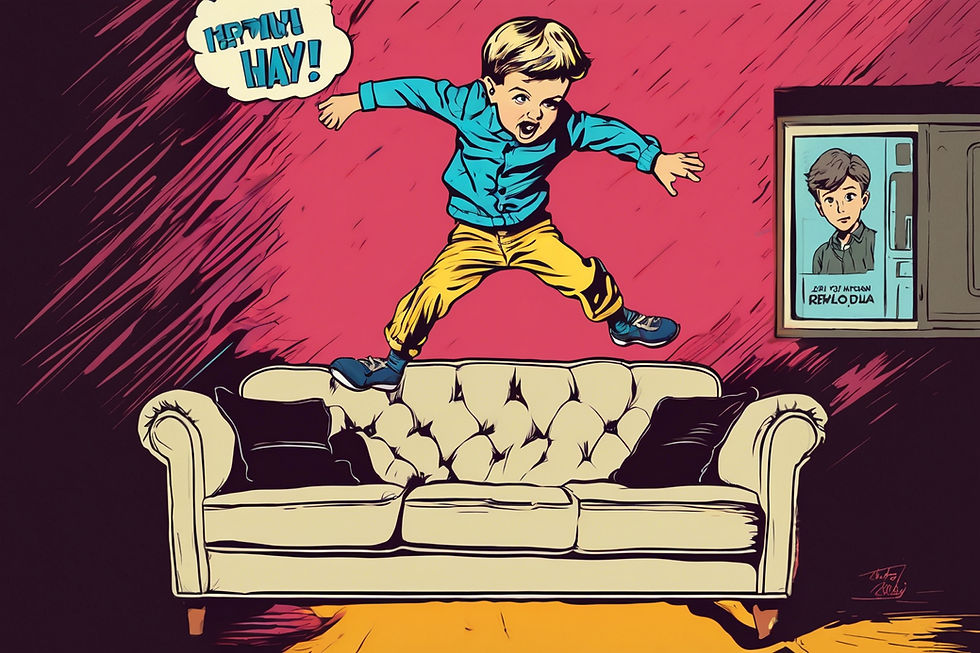Unleashing Creativity: Helping Children Build Resilience Through Problem-Solving
- Justin Lyons

- Mar 31
- 3 min read
In today’s fast-paced world, nurturing resilience in children is more important than ever. Resilience enables children to cope with challenges, learn from failures, and bounce back stronger. One effective way to cultivate resilience is through creative problem-solving. By encouraging kids to think outside the box and approach challenges with creativity, parents and educators can equip them with essential tools to tackle life's obstacles confidently.
Understanding Resilience
Resilience is the ability to adapt and recover from setbacks, adversity, and unexpected changes. For children, developing resilience can significantly impact their emotional and mental health. Studies show that children with high resilience levels are 30% more likely to cope better with stress and challenges. Resilient children tend to build confidence and foster a positive outlook toward difficulties. By instilling resilience early on, children can grow into adults capable of navigating life's ups and downs with grace and determination.
Creative problem-solving encourages children to explore different strategies and draws upon those experiences to enhance their adaptive capabilities. For example, a child facing difficulties in a school project can learn to experiment with various approaches and find the best solution, ultimately becoming more resilient.
The Role of Creative Problem-Solving
Creative problem-solving involves identifying challenges and creating unique solutions. It encourages children to think critically, analyze situations, and evaluate multiple perspectives. This approach not only fosters creativity but also enhances cognitive flexibility—skills proven to be crucial during unexpected hurdles.
Introducing creative problem-solving practices in daily life helps children build confidence and a sense of independence. For example, children who learn that mistakes are opportunities for learning rather than failures develop a mindset that prepares them for life's inevitable roadblocks.
Practical Activities to Foster Creative Problem-Solving
Open-Ended Questions
Encourage curiosity by asking open-ended questions. Instead of giving a direct answer, pose questions that stimulate critical thinking. For instance, if a child struggles with a toy that isn’t functioning, ask, “What can we do to fix this?” This approach helps children brainstorm and think creatively about possible solutions.
Role-Playing Scenarios
Create scenarios that require problem-solving. Role-playing different situations empowers children to think creatively while developing essential social skills. For example, simulate a scenario where a child must collaborate with a friend to solve a problem. This activity teaches negotiation and compromise skills, which are valuable throughout life.
Encourage Artistic Expression
Art serves as a powerful medium for creative problem-solving. Whether painting, sculpting, or acting, artistic expression allows children to explore feelings and ideas in imaginative ways. Encouraging children to communicate their thoughts through art promotes unique solutions and helps them view challenges from different angles.

Colorful art supplies on a table for creative projects Mind Mapping and Technology Integration
Mind mapping is a visual brainstorming technique that helps children outline problems, break them down, and explore solutions. This not only aids organization but also cultivates their creativity. Additionally, utilize technology in problem-solving exercises. Many apps and online platforms encourage critical thinking and creativity through games and interactive challenges, especially for tech-savvy kids.
The Importance of a Supportive Environment
While nurturing creative problem-solving skills, it's crucial to create a supportive environment where children feel safe to express thoughts and share ideas without fear of judgment. Emphasizing effort over results fosters a growth mindset, where children understand that persistence is vital to overcoming challenges.
Introduce regular reflections on problem-solving experiences. Encourage children to discuss what worked, what didn’t, and their feelings throughout the process. This practice reinforces the learning journey and prepares them for future challenges.
Nurturing Emotional Regulation
Teaching children emotional regulation is vital for building resilience. As they engage in creative problem-solving, guiding them to understand their emotions helps them respond constructively to stress and frustration.
Consider introducing techniques like deep breathing, mindfulness, or journaling to help children manage emotions. These tools empower them to pause, assess feelings, and approach problems from a more thoughtful perspective.
Ready to Inspire Resilience
Building resilience in children through creative problem-solving is both enriching and enjoyable. As they learn to confront challenges with creativity and confidence, they acquire essential life skills that will benefit them throughout their lives.
By fostering a supportive environment, using engaging activities, and promoting emotional regulation, parents and educators can help children face difficulties with determination and inventiveness. Unleashing their creativity will allow them to thrive!











Comments